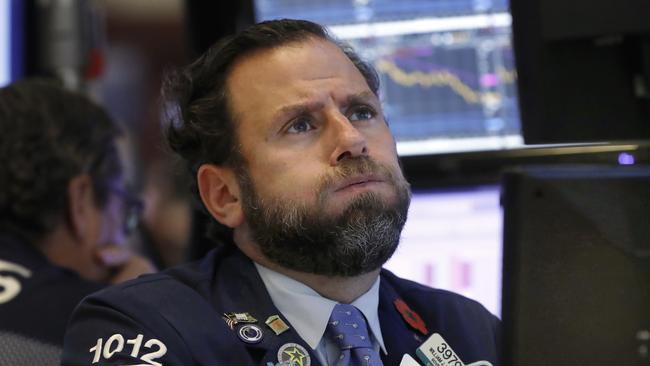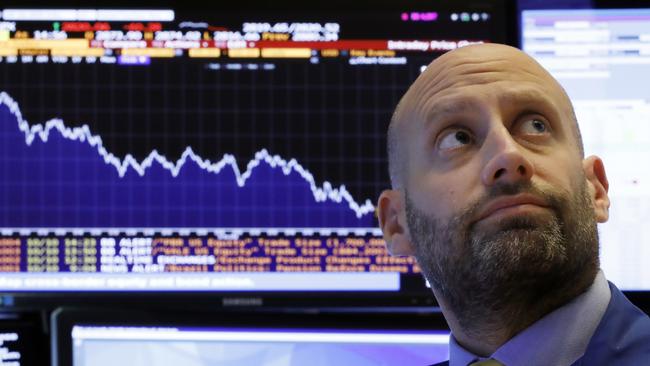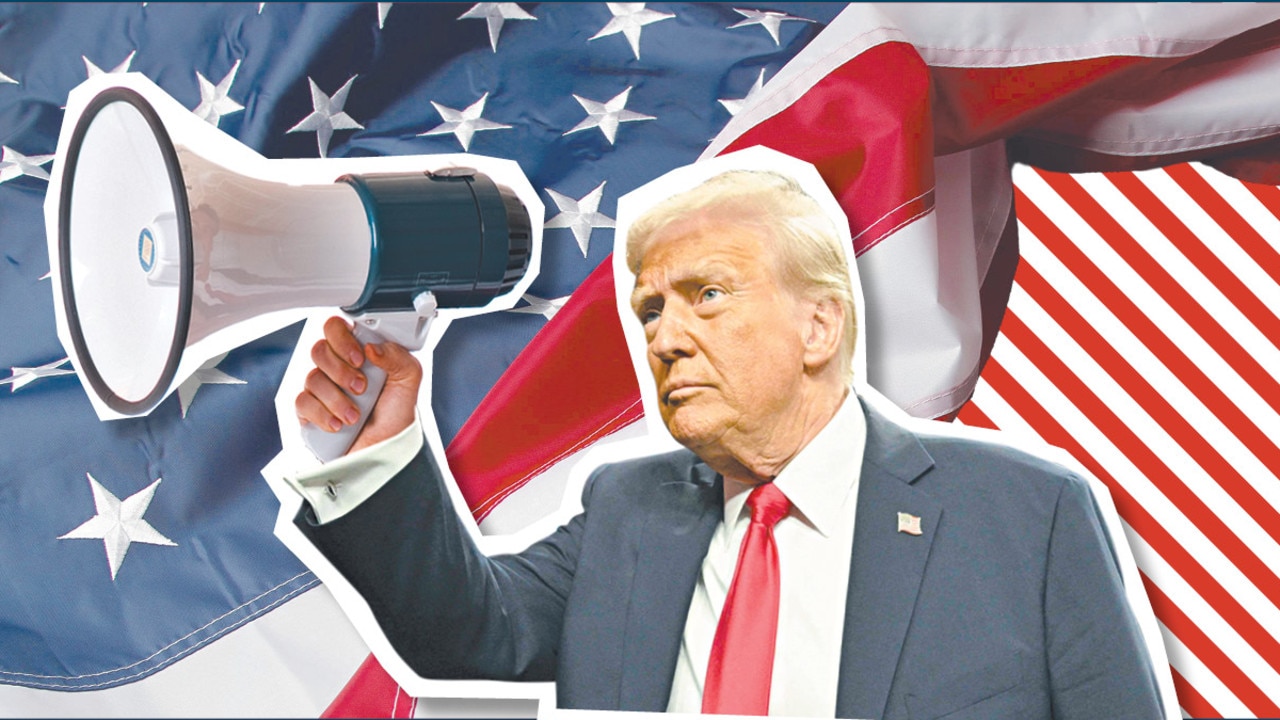Wall Street plunges on rising rates
Donald Trump has called the Fed “crazy” after rising interest rates helped spark a savage selldown on Wall Street.

US stocks dropped sharply as a continuing surge in Treasury yields pulled the Dow Jones Industrial Average down more than 800 points and put the S&P 500 on pace for its longest losing streak in nearly two years.
The S&P 500 fell 3.3 per cent, while the Dow Jones Industrial Average slid 832 points, or 3.2 per cent, to 25599. The Nasdaq Composite dropped 4.1 per cent.
The selloff put both indexes on track for their biggest losses in a single day since April, while the S&P 500 was poised to slide for a fifth straight session.
The pullback sent a measure of stock-market volatility, the Cboe Volatility Index, up 19 per cent in recent trading, suggesting investors were bracing for further swings in the market.
Fast-rising bond yields and signs of inflation have spooked investors that profit margins could narrow, sparking one of the biggest downturns of the year among shares of fast-growing companies that have benefited from a decade of near-zero interest rates.
US President Donald Trump reacted to the sharp falls on Wall Street by accusing the US Federal Reserve of raising rates too much.
“I think the Fed is making a mistake. It’s so tight. I think the Fed has gone crazy,” Mr Trump told reporters as he arrived in Erie, Pennsylvania for a rally.
Mr Trump has repeatedly touted Wall Street records as proof of the success of his economic program, including his confrontational trade strategy.
But today he downplayed the first major drop in months, saying: “Actually, it’s a correction that we’ve been waiting for, for a long time. But I really disagree with what the Fed is doing, OK?”
Mr Trump has previously expressed displeasure with higher short-term interest rates set by the Federal Reserve.

The overnight selling undercut the strong gains companies like Amazon.com, Netflix and Salesforce.com have contributed to the stock market this year and left some investors who hold those shares flat-footed.
“Investors are selling the winners and where the momentum has been,” said Mark Stoeckle, chief executive of Adams Funds, whose funds own stocks like Netflix and Salesforce. “We’re trying to stay really disciplined and make sure we’re not overreacting to what the market’s doing, but this is always a hard environment.”
Technology stocks have been a major contributor to the 9 1/2 year rally. Investors savoured their massive profit margins and exponential sales growth, and many showed a willingness to push valuation multiples to the upper limits of the stock market.
But the combination of rising interest rates and surging bond yields has up-ended the stock market’s status quo, several analysts said. With the Federal Reserve’s easy-money policies coming to an end, several analysts and investors are more willing to call for an investment shift that favours shares of more durable companies, such as healthcare firms, over the high-flying tech stocks that powered the long-running rally.
As stocks fell further from their record highs, bond yields resumed their climb higher. The yield on the 10-year US Treasury note rose to 3.231 per cent from 3.208 per cent a day earlier, further building on their September gain, which was the biggest in a month since January.
Making matters worse is that some of the biggest buyers of stocks this year are currently sitting on the sidelines: the companies themselves. S&P 500 companies have spent a staggering $380 billion on stock repurchases through the first half of this year, with Apple, Cisco and Facebook among the most active buyers of stock.
But companies typically don’t buy back their own shares in the month before reporting quarterly results due to regulations, removing a vital pillar of support from stocks.
“That’s part of the reason this (selloff) is happening now,” said Andrew Slimmon, a managing director at Morgan Stanley Investment Management. “the biggest buyers of these momentum stocks can’t buy right now.”

Overnight, investors took risk off the table. While tech, communications and consumer discretionary stocks all fell more than 2.3 per cent.
Industrial and material stocks were also knocked back 2.5 per cent and 1.8 per cent, respectively, as investors worried that rising rates would eat into their profits at a time when many of those companies are already coping with higher commodity costs and rising wages.
More defensive stocks fared better. Utilities, which investors tend to like for their attractive dividends and relative stability, was the only sector to post a gain in recent trading, while consumer staples and real-estate stocks fell less than 0.5 per cent.
Still, tech -- especially internet and social-media stocks -- remains one of the most popular positions among big money managers and retail investors, analysts said, and further drawdowns are expected to come in a rising-rate environment.
“There’s a tug of war in the market,” said Quincy Krosby, a market strategist at Prudential Financial. “Is the business cycle slowing down to the point it’s looking like a recession at some point, or not?”
If bond yields continue their torrid climb, several money managers and analysts predicted further pain for the stock market, even with the S&P 500 on the cusp of reporting its third straight quarter of double-digit profit growth.
“The speed of the move has made equity markets wobbly and rising rates on bonds and cash make for increased competition with stocks,” said Ed Campbell, a senior portfolio manager at QMA, the $128-billion quant-equity arm of PGIM.
The head of the New York Federal Reserve Bank said he expects the US central bank to return its target interest rate to normal or neutral levels within “the next year or so,” then enabling the Fed to respond to unexpected moves in the economy at large.
The Fed has raised rates eight times over the past three years, with markets now focusing on when the increases would stop. The central bank is expected to raise rates again in December.
Declines were just as bad in Europe, which saw stocks suffer their biggest fall since late June. The Stoxx Europe 600 slipped 1.6 per cent to extend its loss for the year to 5.7 per cent.
Dow Jones


